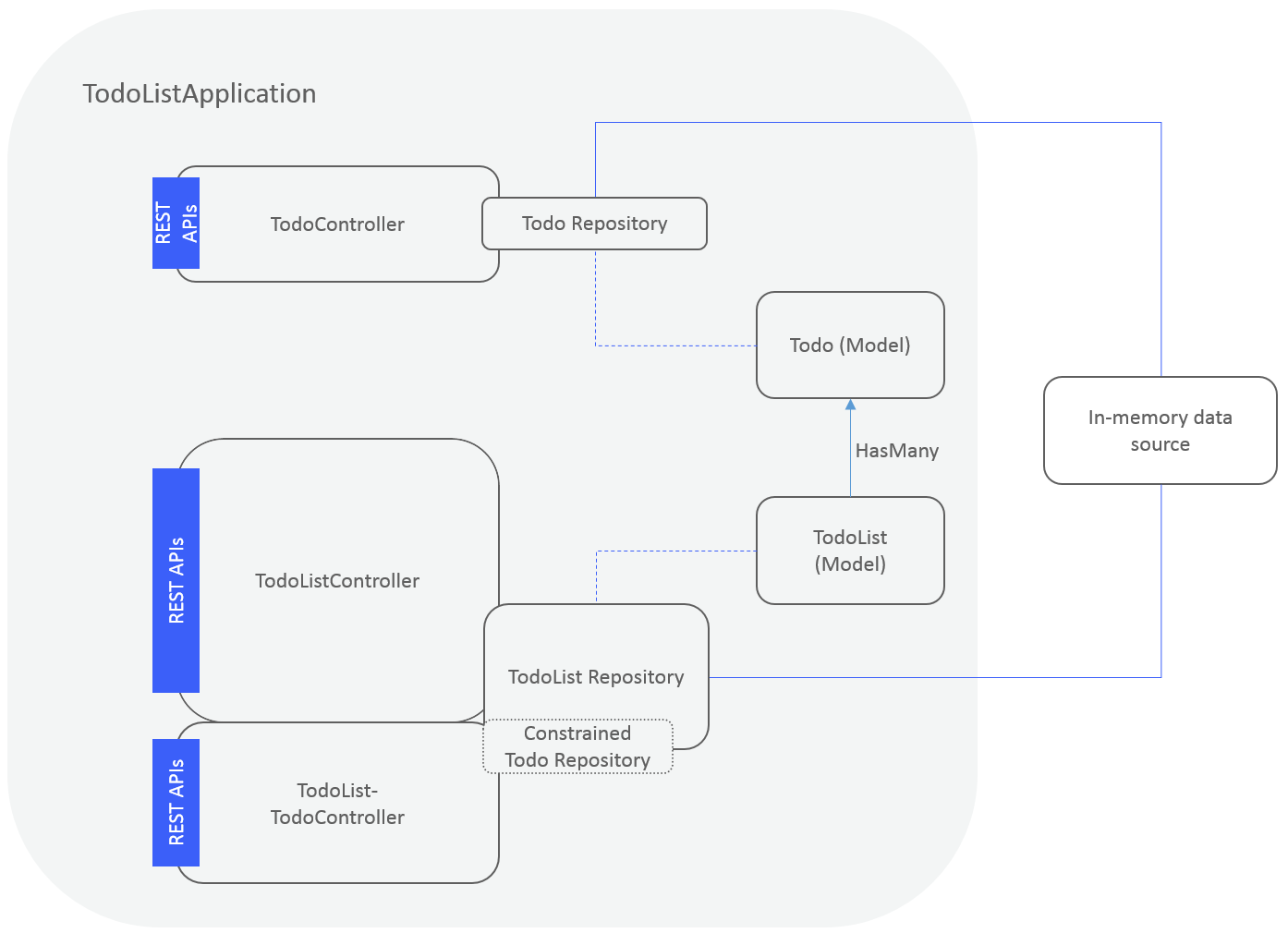@loopback/docs
Version:
Documentation files rendered at [https://loopback.io](https://loopback.io)
106 lines (68 loc) • 2.95 kB
Markdown
# @loopback/example-todo-list
This is an extended tutorial that builds on top of `@loopback/example-todo`.
## Overview
This tutorial demonstrates how to create a set of APIs for models that are
related to one another.

## Setup
If you're following from the tutorial in `@loopback/example-todo`, you can jump
straight to our first step:
[Add TodoList model](http://loopback.io/doc/en/lb4/todo-list-tutorial-model.html)
If not, you'll need to make sure you have a couple of things installed before we
get started:
- [Node.js](https://nodejs.org/en/) at v10 or greater
Next, you'll need to install the LoopBack 4 CLI toolkit:
```sh
npm i -g @loopback/cli
```
We recommend that you start with the
[todo tutorial](http://loopback.io/doc/en/lb4/todo-tutorial.html) if you're not
familiar with LoopBack4, but if you are and don't want to start from scratch
again, you can use the LoopBack 4 CLI tool to catch up to where this tutorial
will continue from:
```sh
lb4 example todo
```
It should be noted that this tutorial does not assume the
[optional geo-coding step](https://loopback.io/doc/en/lb4/todo-tutorial-geocoding-service.html)
has been completed. Whether the step has been completed or not, the content and
the steps listed in this tutorial remain the same.
## Tutorial
Once you're ready to start the tutorial, let's begin by
[adding a TodoList model](http://loopback.io/doc/en/lb4/todo-list-tutorial-model.html)
### Steps
1. [Add TodoList Model](http://loopback.io/doc/en/lb4/todo-list-tutorial-model.html)
2. [Add TodoList Repository](http://loopback.io/doc/en/lb4/todo-list-tutorial-repository.html)
3. [Add TodoList and TodoList's Todo Controller](http://loopback.io/doc/en/lb4/todo-list-tutorial-controller.html)
## Try it out
If you'd like to see the final results of this tutorial as an example
application, follow these steps:
1. Run the `lb4 example` command to select and clone the todo repository:
```sh
lb4 example todo-list
```
2. Switch to the directory.
```sh
cd loopback4-example-todo-list
```
3. Finally, start the application!
```sh
$ npm start
Server is running at http://127.0.0.1:3000
```
Feel free to look around in the application's code to get a feel for how it
works. If you're interested in how it's been built or why we do things a certain
way, then continue on with this tutorial!
### Bugs/Feedback
Open an issue in [loopback-next](https://github.com/loopbackio/loopback-next)
and we'll take a look!
## Contributions
- [Guidelines](https://github.com/loopbackio/loopback-next/blob/master/docs/CONTRIBUTING.md)
- [Join the team](https://github.com/loopbackio/loopback-next/issues/110)
## Tests
Run `npm test` from the root folder.
## Contributors
See
[all contributors](https://github.com/loopbackio/loopback-next/graphs/contributors).
## License
MIT